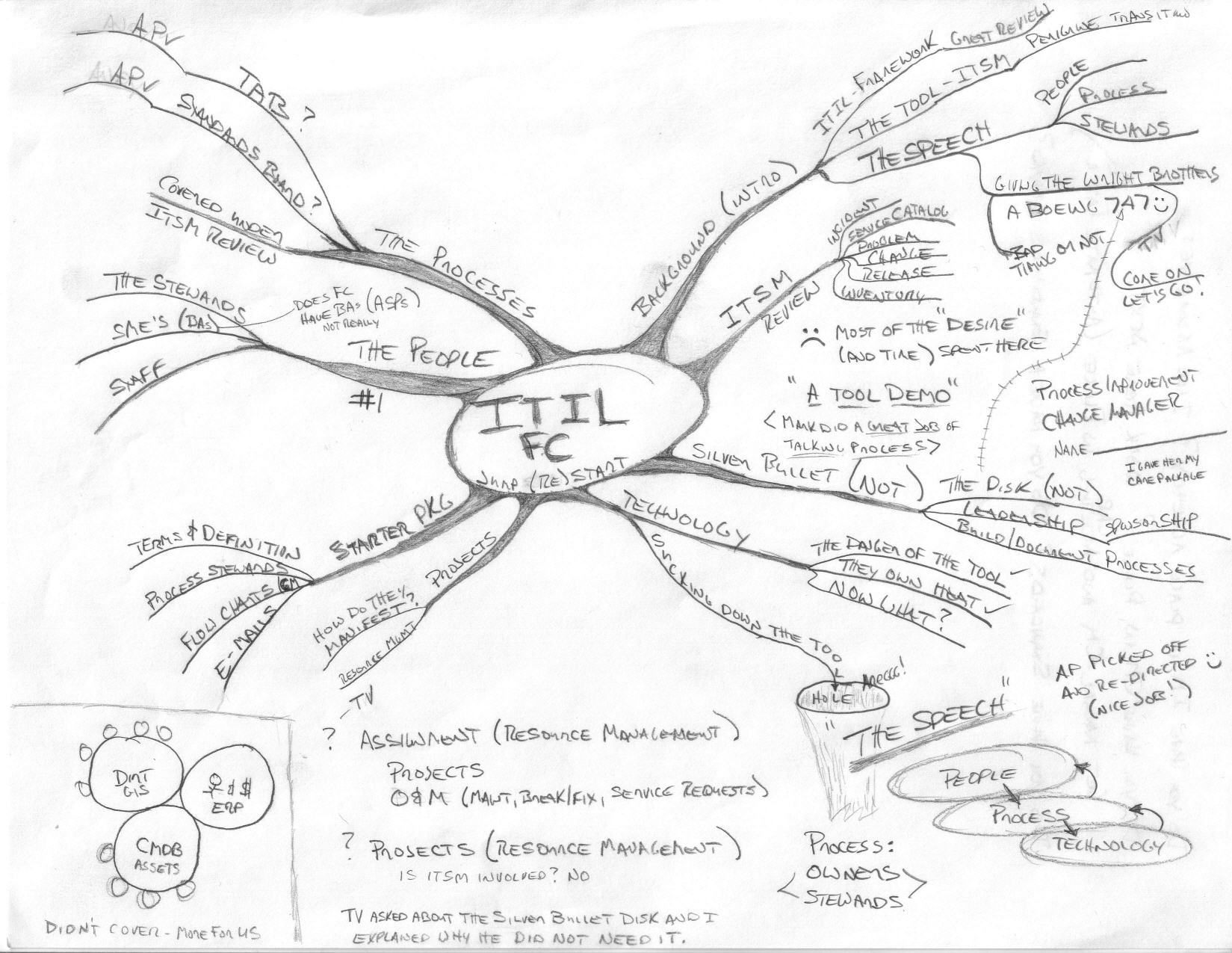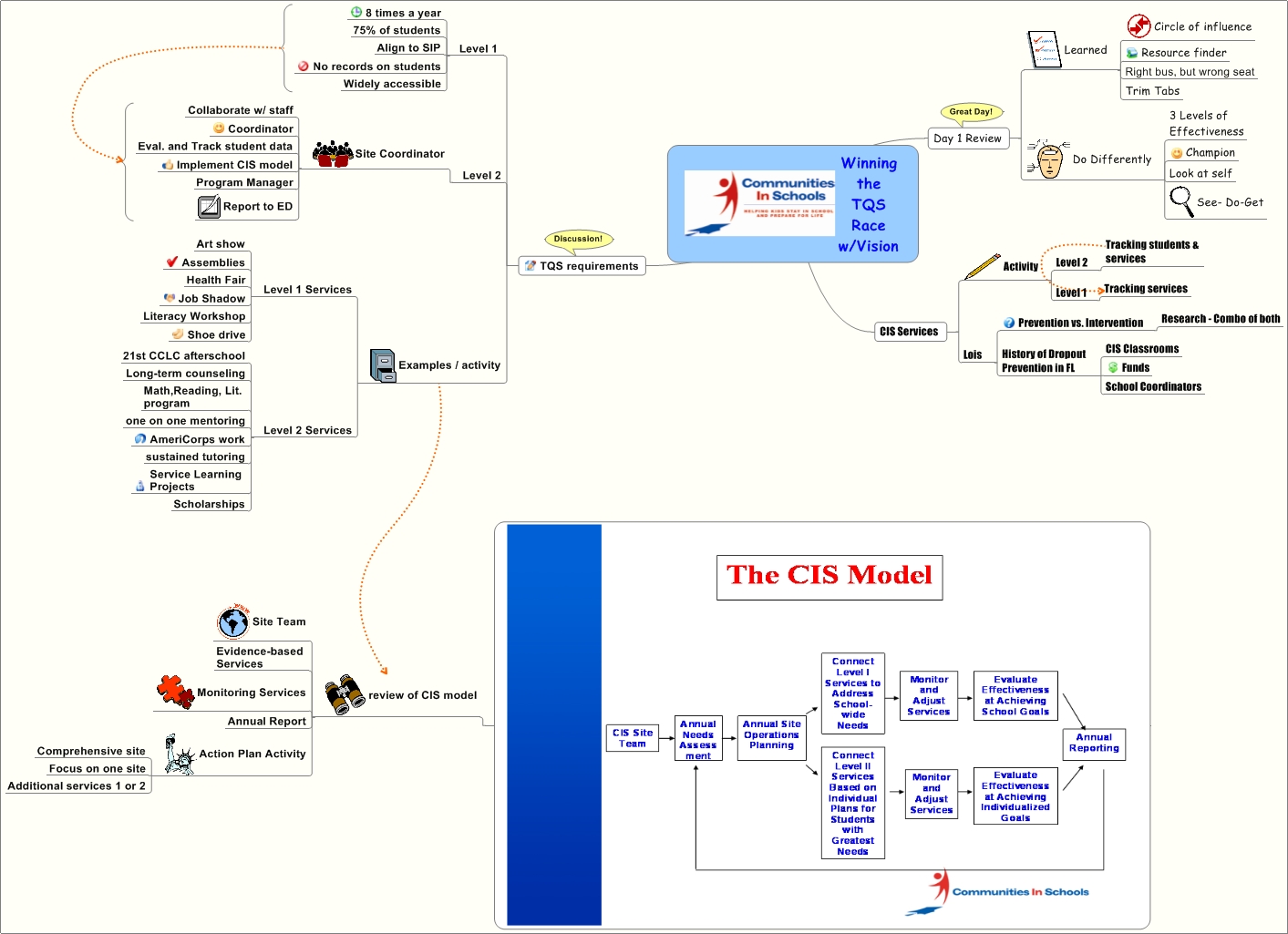An Idea Mapping Success Blogs Weblog
Mind Mapping or Idea Mapping?
14May2009 Filed under: Differences Between Idea Mapping and Mind Mapping, Idea Mapping Example, Mind Mapping Examples Author: Jamie NastIdea Mapping has a rich heritage in mind mapping. However I often get this question, “What is the difference between idea mapping and mind mapping?” I use the term “Idea Mapping” rather than “Mind Mapping” for several reasons.
- First I use the term idea mapping out of respect for the mappers who map strictly by the mind mapping laws. (Although many mind mappers probably don’t realize they are breaking them anyway.)
- Although the laws can have a time and place, I’ve had many a frustrated client who nearly threw out the tool because they felt their creativity was being hampered (especially by the one-word-per-line law).
- The use of the laws should be determined by the application and purpose for creating the map — not because of a set of rules.
- I think idea mapping is actually a nice descriptor of the tool and what it does.
I do share these laws with my workshop participants, but I call them guidelines and talk about a variety of situations where keeping these guidelines just doesn’t make sense. Here are a few examples:
This idea map was created by Daniel Pace during a live meeting, and you can read his full story here. My point in this example is that the purpose was speed and capturing as much detail as possible. Therefore it doesn’t make sense to waste time switching pen colors or worrying about lots of images (although he did get a few in). I’m a huge fan of color and imagery, but not when it is counterproductive. Also notice that using a single word per line does not make sense in many real-world scenarios.
Here’s another example that breaks the law that says everything must radiate from a central word and/or image. This one was created by Matt McKibbin and you can read the full story here. Matt’s message was best communicated without a single central focus.
I have lots of other examples that break other official mind mapping laws (using lined or colored paper, leaving the paper portrait rather than turning it landscape, etc.), but I think you can hear the message. Idea mapping gives the mapper a hybrid that combines the best of both worlds to free the mind to be creative and purposeful in how to map in a way that reflects the individual’s or team’s need.
(See the squidoo idea mapping group and main squidoo lenses, and flickr photos for more idea mapping examples.)
6 Responses to “Mind Mapping or Idea Mapping?”
Leave a reply
Idea Mapping Blog
The purpose of this blog is to share idea mapping examples and related learning from my Idea Mapping, Memory, Speed Reading, and Certification Workshops. This blog is dedicated to my Certified Idea Mapping Instructors, my clients, Mind Mapping and Idea Mapping practitioners around the globe.


![[Ask]](http://ideamapping.ideamappingsuccess.com/IdeaMappingBlogs/wp-content/plugins/bookmarkify/ask.png)
![[del.icio.us]](http://ideamapping.ideamappingsuccess.com/IdeaMappingBlogs/wp-content/plugins/bookmarkify/delicious.png)
![[Digg]](http://ideamapping.ideamappingsuccess.com/IdeaMappingBlogs/wp-content/plugins/bookmarkify/digg.png)
![[Facebook]](http://ideamapping.ideamappingsuccess.com/IdeaMappingBlogs/wp-content/plugins/bookmarkify/facebook.png)
![[Google]](http://ideamapping.ideamappingsuccess.com/IdeaMappingBlogs/wp-content/plugins/bookmarkify/google.png)
![[MySpace]](http://ideamapping.ideamappingsuccess.com/IdeaMappingBlogs/wp-content/plugins/bookmarkify/myspace.png)
![[Slashdot]](http://ideamapping.ideamappingsuccess.com/IdeaMappingBlogs/wp-content/plugins/bookmarkify/slashdot.png)
![[Sphinn]](http://ideamapping.ideamappingsuccess.com/IdeaMappingBlogs/wp-content/plugins/bookmarkify/sphinn.png)
![[StumbleUpon]](http://ideamapping.ideamappingsuccess.com/IdeaMappingBlogs/wp-content/plugins/bookmarkify/stumbleupon.png)
![[Technorati]](http://ideamapping.ideamappingsuccess.com/IdeaMappingBlogs/wp-content/plugins/bookmarkify/technorati.png)
![[ThisNext]](http://ideamapping.ideamappingsuccess.com/IdeaMappingBlogs/wp-content/plugins/bookmarkify/thisnext.png)
![[Twitter]](http://ideamapping.ideamappingsuccess.com/IdeaMappingBlogs/wp-content/plugins/bookmarkify/twitter.png)
![[Webride]](http://ideamapping.ideamappingsuccess.com/IdeaMappingBlogs/wp-content/plugins/bookmarkify/webride.png)
![[Email]](http://ideamapping.ideamappingsuccess.com/IdeaMappingBlogs/wp-content/plugins/bookmarkify/email.png)
Jason Koulouras
May 18th, 2009 at 7:49 am
Jamie, thanks for this – it is amazing to observe the power of words and semantics and how “mind mapping” and “idea mapping” as terms cause a ruccus. Call it “rabbit idea stew” and people will still comment on the words. Anyways, best strategy for people is do what works for them and remember though when presenting that your audience may not get “what works best for you”.
Cheers
Jason
Mind Mapping Links - May 2009 | MindMapSwitch
May 28th, 2009 at 5:29 pm
[…] at Idea Mapping, Jamie Nast has been delving into the differences between mind mapping and idea mapping. If your not too bothered about sticking to the mind mapping laws, then idea mapping might just be […]
The Mindjet Blog » Mind Mapping News You Can Use
June 3rd, 2009 at 10:58 am
[…] Mind Mapping or Idea Mapping?: Jamie Nast, author of Idea Mapping, poses the question and highlights the benefits of breaking the rules… […]
Cristine Goldberg
June 10th, 2009 at 12:23 pm
The whole point here is to use the tool of idea mapping regularly and over a period of time you will find what triggers your key words, when the phrase is necessary for your retention or to make a point and so forth. Although I use color regularly, there are those times where I do not. If I need to develop the black & white into something more, then I’ll use color.
Emmanuel Jones
March 23rd, 2015 at 9:57 pm
The one word rule in mind mapping is supposed to make coming up with ideas easier. For example, you have more options with the general term “milk”, than with the pharase chocolate milk”.
Jamie Nast
April 9th, 2015 at 9:23 pm
Emmanuel – I agree with you, but in my experience in the business world professionals are rarely creating idea maps using a single word as the central image. They are creating maps around complex problems or large amounts of complex data. One of the more prominent examples of this is an idea map on this blog titled “Rebuilding Downtown Manhattan” which was created after the 911 disaster. A single word will always generate more ideas than a phrase, but a rare application in the real world.